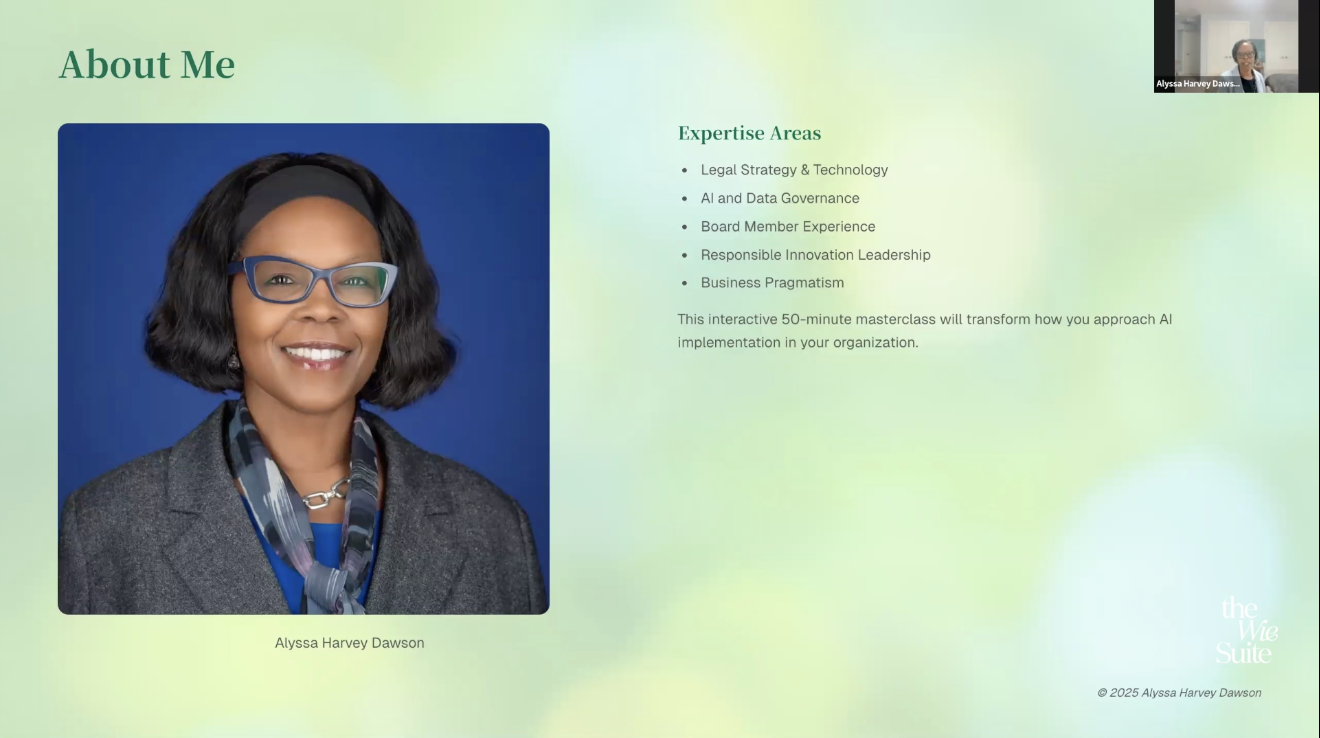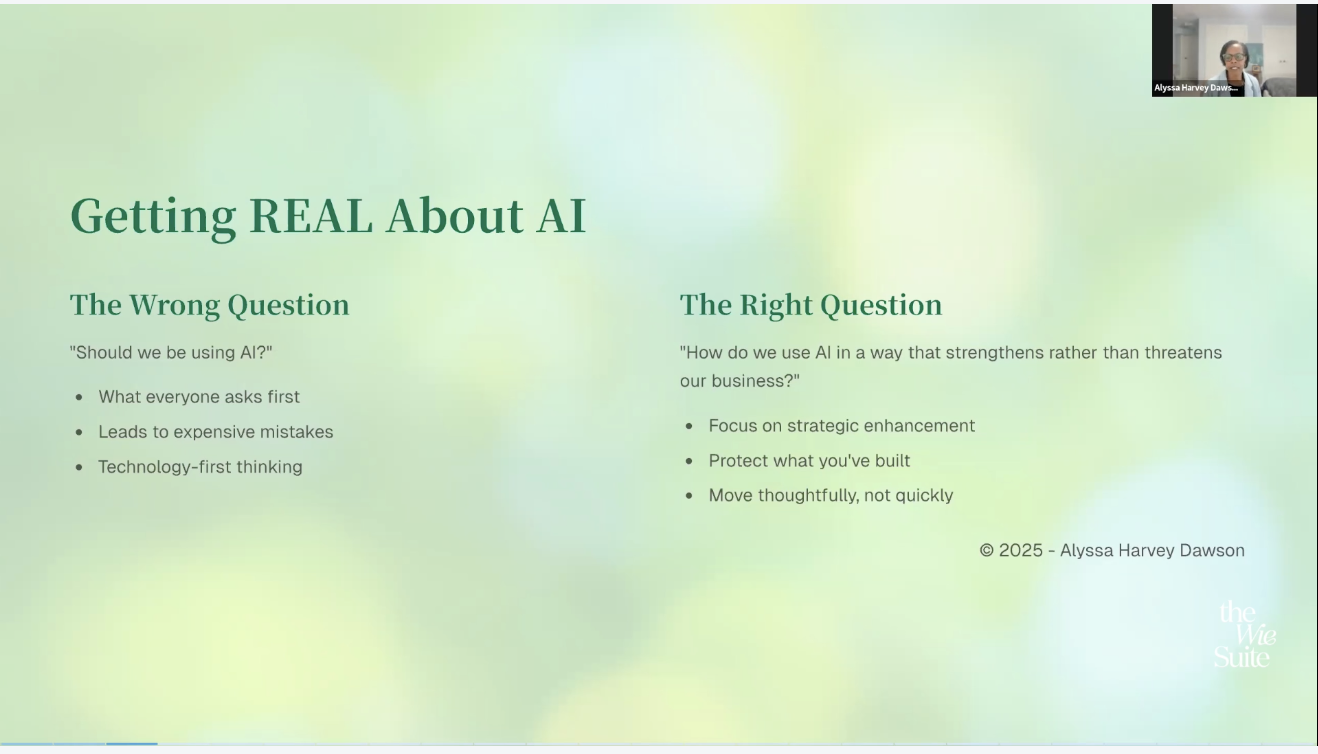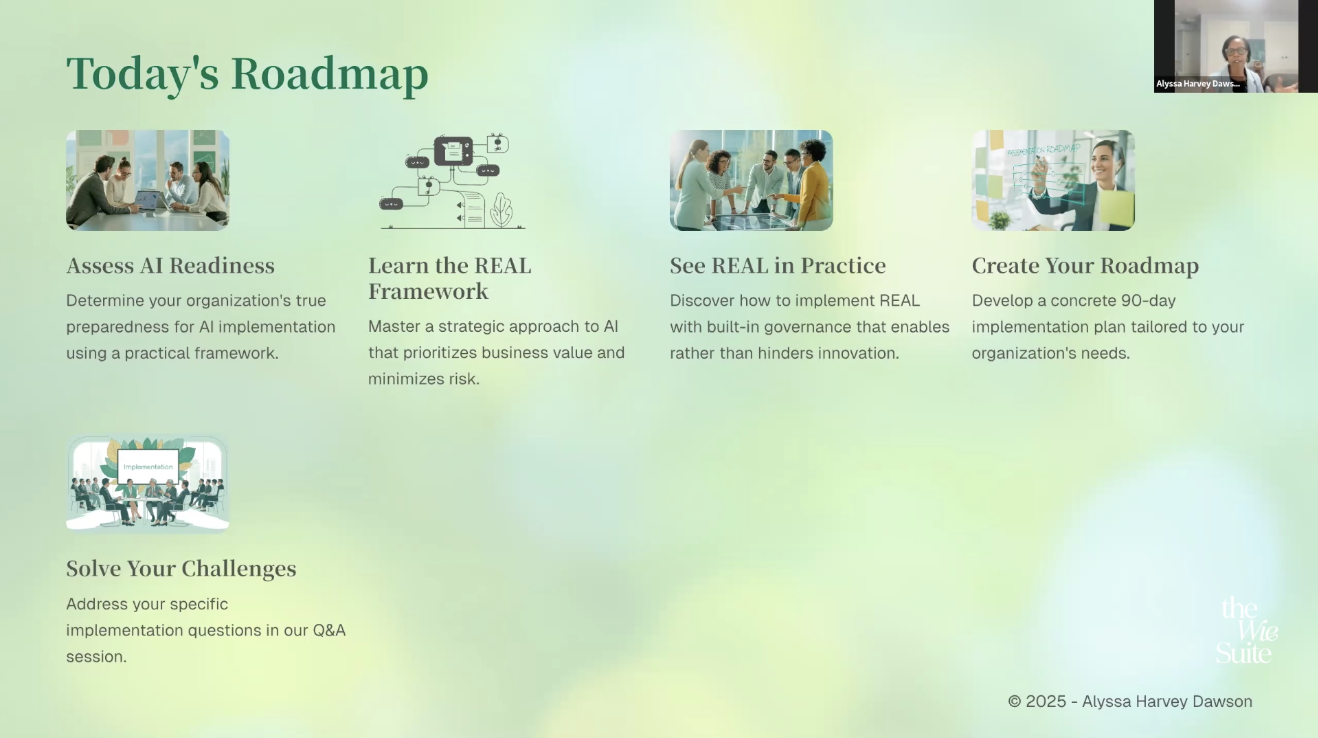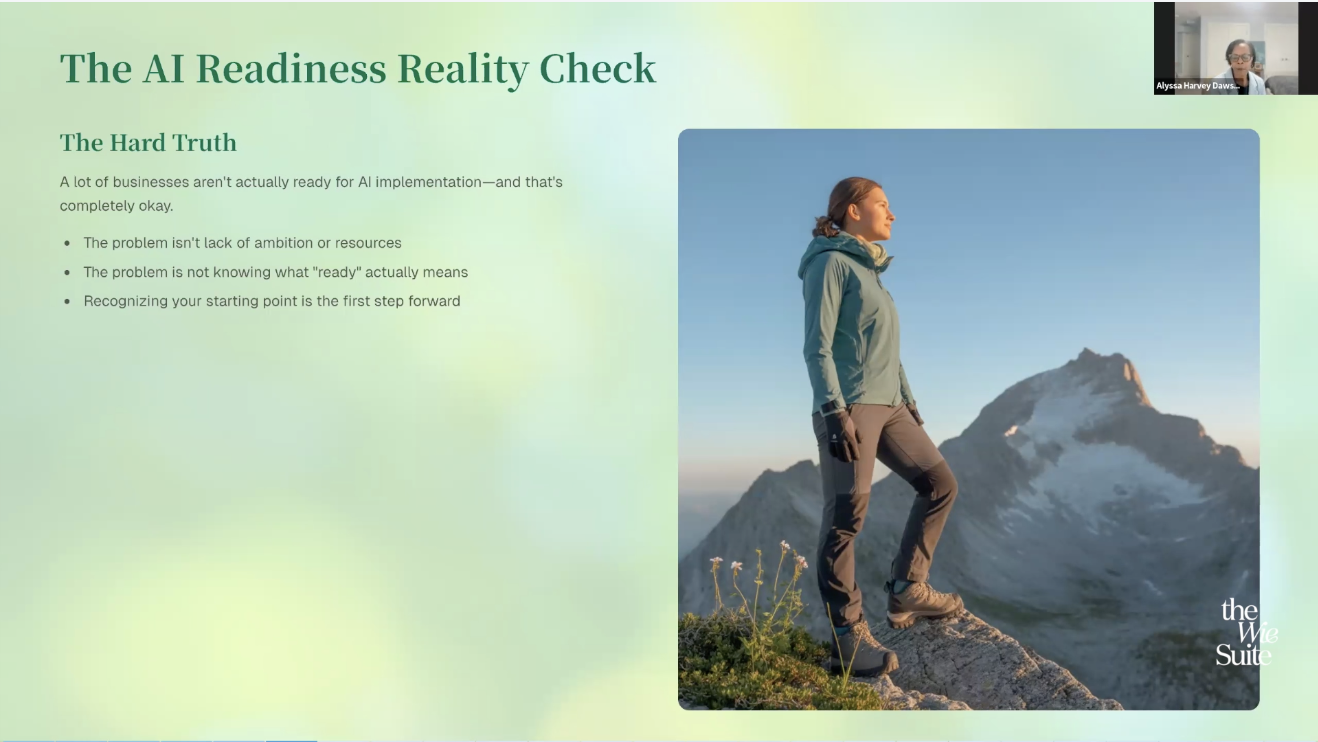Let me tell you about the time our startup nearly dove into AI because, well, everyone else was. We didn't pause to ask if our data was organized (it wasn't), or if the whole team was even on board. Cue the mayhem. So, let's skip the horror stories and get real: you're here because you want your business to be both smart and safe about AI. Forget buzzwords and blanket yes-or-no answers—today, you'll get straight talk, candid checklists, and practical next steps drawn from hands-on experience and, yes, a few embarrassing missteps.
That Awkward Moment When You Realize: AI Readiness Is More Than Tech Hype
Picture this: You’re in a meeting about AI. Someone asks, “Should we be using AI?” The room goes quiet. A few people nod, someone mentions ChatGPT, and suddenly, the conversation spirals into buzzwords and bold predictions. But when it comes to a real AI readiness assessment, the room feels a lot less confident. Sound familiar?
This isn’t just your team. In a recent poll, most leaders ranked themselves right in the middle on an AI readiness index. Not totally lost, but nowhere near “we’ve got this.” As one participant put it, “I’m really not sure. I’m neutral.” Only one or two felt even somewhat confident. The rest? They admitted there’s work to do. And that’s not unusual. As research shows, confidence is higher than readiness. I love that. It’s a reminder that enthusiasm doesn’t equal preparedness.
Earlier this week, I attended a National Association of Corporate Directors panel. The topic was cybersecurity, but the conversation quickly turned to AI. What I overheard was telling: most organizations are somewhere between excited and lost. There’s a sense that “everyone’s doing it,” but that’s not a strategy. In fact, the problem isn’t a lack of ambition or resources. It’s trying to figure out what ‘ready’ really means.
So, what does technology readiness for AI actually look like? It’s not just about having the latest tools or the biggest budget. Effective AI adoption readiness assessment goes deeper. Research indicates that true readiness is multidimensional. It includes:
- Clear strategy and business alignment
- Strong data quality and management
- Reliable technology infrastructure
- Skilled people and supportive culture
- Defined processes and governance
- Ethical oversight and risk management
AI readiness frameworks help organizations evaluate these areas in a structured way. They don’t just ask, “How do we use AI?” Instead, the right question is, “How does AI make our business safer, stronger, and genuinely better?”
Most leaders, even with years of experience navigating tech disruptions, find themselves somewhere between curiosity and caution. That’s okay. The shift from tech-first to value-first thinking is what separates hype from real progress. Clarity—not just excitement—matters most when it comes to AI readiness.

The Uncomfortable Truth About Data (Your AI Readiness Starts Here)
Let’s get real about data readiness—because it’s the first, and maybe the most uncomfortable, step in your AI adoption readiness assessment. Before you get excited about AI magic, you need to face a simple question: Can you actually find, access, and trust the information your AI will need?
Start with this: “We have clean, organized data that’s easily accessible across departments.” On a scale from 1 (not at all true) to 5 (completely true), where do you honestly stand? Don’t answer based on what you wish were true or what’s in your roadmap. Think about your reality right now. If you’re not at a solid 4 or 5, you’re not ready for AI—at least, not for AI that delivers real value.
Why does this matter so much? Research shows that data quality, data availability, and data management are the foundation for any successful AI project. If your data is scattered, outdated, or poorly labeled, your AI models will struggle—or worse, fail completely. Clean, accessible, and governed data isn’t just a best practice; it’s non-negotiable. In fact, the first pillar of any solid AI readiness framework is data maturity.
- Data maturity: Can you easily find the information your AI needs, across all departments?
- Transparency: If asked tomorrow, could you show all the personal data you collect on your customers? Be honest.
- Governance: Do you have data governance policies that are actually used—not just written down and forgotten?
- Structure: Is your data labeled, organized, and accessible, or is it a mess of spreadsheets and silos?
As one expert put it:
If somebody asked you to show them all the personal data you collect on your customers, could you do it? And if not, you're not ready for AI.
Skipping this foundational work is a recipe for disappointment. AI isn’t a magic wand—it’s a tool that’s only as good as the data you feed it. Studies indicate that organizations with high data readiness are far more likely to see positive outcomes from AI initiatives. So, before you rush into implementation, take a hard look at your data landscape. If you can’t track, govern, and access your data, pause and fix that first. That’s where true AI readiness begins.

Beyond Tech: The Pillars of AI Readiness Nobody Talks About
When it comes to AI readiness, most organizations jump straight to technology. But the real foundation of a successful AI strategy lies in three essential, often overlooked pillars: data maturity, business clarity, and organizational alignment. These are the building blocks of any robust AI readiness framework—and without them, even the best technology will fall short.
1. Data Maturity: Get Your House in Order
Before you even think about AI, ask yourself: Do you truly understand your data? Where does it live? Is it structured, labeled, and accessible? Research shows that data maturity is the first and most critical of the AI readiness pillars. If you can’t identify what data you collect or how it’s governed, you’re not ready for AI. Effective AI readiness assessments often start with questions like, “Could you show all the personal data you collect if asked tomorrow?” If the answer is no, it’s time to focus on your data foundation before moving forward.
2. Business Clarity: Define the Problem, Don’t Chase Solutions
AI is not a magic fix for vague business challenges. You need to clearly define the specific business problems you want AI to solve. This is where AI strategic planning comes into play. Can you articulate the measurable outcomes you expect? Are you able to quantify the operational or financial benefits? As one expert put it, “Don’t chase solutions—define the problems.” Board members and executives should agree on what success looks like before any technology is deployed. This step is fundamental in any AI readiness assessment.
3. Organizational Alignment: More Than Just Smiling for Show
Organizational alignment is about more than just getting buy-in from leadership. It’s about ensuring everyone, from the C-suite to the front lines, understands their role in the initiative. As one leader said,
“It's not just about getting buy-in; it's about ensuring everyone understands their role in the initiative.”True alignment requires tough conversations about risk tolerance and shared vision. Studies indicate that without this alignment, even the best AI technology will struggle to deliver value. Change management is crucial here, as AI will inevitably reshape roles, relationships, and workflows.
Remember, effective AI adoption is not just a technology challenge—it’s an organizational transformation. The strongest AI readiness frameworks focus on these non-technical pillars to ensure sustainable innovation and lasting impact.

Score Yourself: The Sometimes Brutal AI Readiness Reality Check
Before you leap into the world of AI, it’s time for a reality check. An honest AI readiness assessment can reveal if your business is truly prepared—or if you’re just feeling confident. The best way to start? A simple, candid self-assessment using a proven AI readiness index framework.
Here’s how it works: Rate your organization from 1 to 5 in three key areas—data readiness, problem clarity, and leadership alignment. Add up your scores for a maximum of 15 points. This straightforward AI adoption readiness assessment is more than a checklist; it’s a mirror reflecting your actual preparedness, not just your hopes.
- 12–15 points: You’re AI-ready. You understand your data, your leadership is on board, and your business goals are crystal clear. Go ahead—iterate, experiment, and build on your strong foundation.
- 9–11 points: You’re close, but don’t ignore those gaps. Maybe your data isn’t as clean as you thought, or leadership isn’t fully aligned. Focus on patching these holes before moving forward.
- 6–8 points: There’s a significant gap. Don’t panic, but recognize there’s real work to do. This is your chance to shore up weak spots before risking resources on AI projects.
- Below 6 points: Hit pause. Foundational work is needed before you even think about adopting AI. It’s not a setback—it’s smart strategy.
Knowledge is power. Recognizing gaps is the smartest thing you can do for your business.
Research shows that AI readiness assessments often use maturity models or scorecards to help organizations move from basic awareness to full AI integration. These frameworks don’t just measure technology—they look at your strategy, data quality, leadership, and culture. Real-world examples highlight how many teams overestimate their readiness. In candid polls, participants often realized their confidence didn’t match their actual preparedness. That’s why a pragmatic AI readiness blueprint is so valuable: it helps you see where you truly stand.
Sometimes, it’s uncomfortable to admit you’re not as ready as you thought. But honest reflection is crucial. Your confidence might outpace your preparation—and that’s okay. What matters is using the right tools to identify and address those gaps. After all, the smartest leaders know that recognizing what you don’t know is the first step toward real progress.

Meet ‘REAL’: A Framework That Puts Strategy (Not Shiny Objects) First
Let’s be honest: AI is everywhere, and it’s easy to get swept up in the excitement. But before you dive into the latest tool or trend, you need a clear strategy. That’s where the AI readiness framework called ‘REAL’ comes in—a practical blueprint designed to help you focus on what truly matters for your business.
Start With Problems, Not Solutions
Too often, organizations jump straight to solutions—“Let’s use AI for this!”—without understanding the real business problem they’re trying to solve. The REAL framework flips this thinking. As Alyssa Harvey Dawson, the creator of this approach, puts it:
It’s a results-focused approach that starts with business problems, not just an AI solution.
This means asking the right questions from the start. Where are you now? What challenges are you facing? It doesn’t matter if you’re just beginning or already experimenting with AI. What matters is knowing where you want to go and why.
Prioritize Value, Minimize Risk
With so many shiny AI objects out there, it’s easy to lose sight of value. The REAL framework helps you prioritize projects that deliver real business impact and minimize unnecessary risk. This is where AI risk management and AI governance come into play. Research shows that the best AI readiness blueprints establish oversight structures, ethical guidelines, and continuous monitoring of performance and risks. It’s not about box-ticking compliance—it’s about practical oversight that actually protects your business.
Think Long-Term: Build for Future Wins
AI isn’t just about what works today. It’s about setting up your organization for future success. The REAL framework is evidence-based, not speculative. Every decision is supported by data and honest debate. This approach works whether you’re just starting out or scaling up your AI investments. You’re building a foundation for sustainable innovation, not just chasing the next big thing.
Checklist: From Outcomes to Accountability
- Define clear business outcomes before starting any AI project
- Measure success with relevant, actionable metrics
- Establish accountability and oversight for every step
- Continuously monitor and adjust based on results and risks
By integrating business value, accountability, and structured, risk-aware planning, the REAL framework ensures your AI journey is strategic, not reactionary. It’s a true AI readiness blueprint for organizations that want to do more than just implement AI—they want to thrive with it.
Conclusion: Why Knowing Where You Stand Is the Most Strategic Move of All
Let’s be honest—AI adoption isn’t a sprint. It’s not even a marathon. It’s more like a long, winding hike where every organization starts at a different trailhead. The most strategic move you can make right now is to pause and ask yourself: Is your business really ready for AI? This isn’t about comparing scores or racing ahead. It’s about understanding your own starting line and embracing it with clarity and confidence.
Research shows that long-term sustainability in AI projects comes from continuous evaluation. That means regularly checking the impact of your AI initiatives, making sure you’re allocating resources wisely, and always aligning your efforts with your organization’s core goals. An AI readiness framework or a structured AI adoption readiness assessment isn’t just a box to tick—it’s your roadmap for honest reflection and purposeful progress.
Maybe you’ve scored a six on your latest AI readiness assessment. Maybe your confidence is higher than your actual readiness. Or maybe you’re just starting out, unsure where to begin. Here’s the thing: “It doesn’t matter where you fall right now as long as you know where you’re trying to go.” That wisdom rings true for every leader navigating the AI landscape. The AI readiness index is not about perfection; it’s about self-awareness. You can’t fix what you won’t face.
Too often, organizations get swept up in the hype, chasing after AI promises without a clear sense of their own capabilities or needs. But the real work—building a culture of candid reflection, investing in the right skills, and setting up strong governance—distinguishes successful AI adopters from those who simply follow the crowd. Organizational self-awareness isn’t just a buzzword; it’s the foundation for ethical, effective innovation.
So, take the time to ground yourself. Use frameworks like REAL or other proven AI readiness frameworks to assess where you stand. Embrace the tough questions. Progress in AI isn’t about luck or bravado—it’s about gradual, well-supported steps forward. Every journey is unique, and every starting point is valid. What matters most is your willingness to face reality, learn, and keep moving with purpose. That’s how you turn AI from a buzzword into a strategic advantage—one honest step at a time.
TL;DR: Before you race to adopt AI, get brutally honest: check your data, get the team genuinely aligned, define real business problems, and use a practical strategic framework. Innovation only works when it’s grounded in clarity and organizational readiness, not just ambition or FOMO.
Hat tip for the valuable content shared under a Creative Commons license.



